Discover about Panch Badri Temples in Uttarakhand, India
Panch Badri in Uttarakhand is nestled amidst the breathtaking landscapes of Uttarakhand, the Panch Badri temples stand as an embodiment of spirituality, history, and natural beauty. These “Five Holy Temples in Uttarakhand” hold a significant place in Hindu mythology and offer a unique pilgrimage experience.
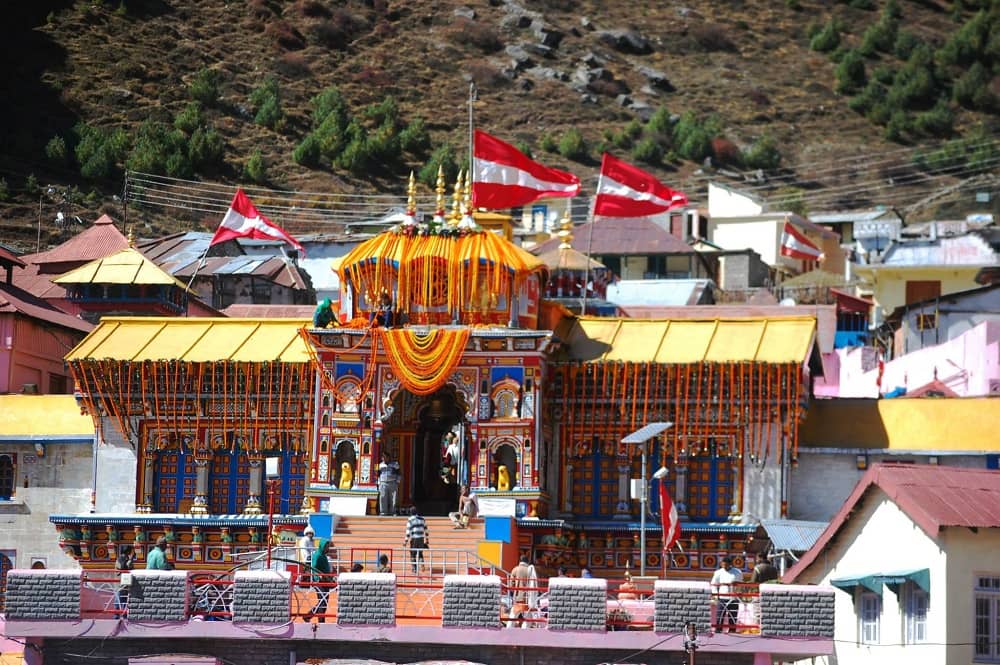
Panch Badri Name Reference
The Panch Badri Name refers to five sacred temples dedicated to Lord Vishnu, located in the Garhwal region of Uttarakhand, India. These temples are revered as part of a pilgrimage circuit:
- Badrinath: The main temple, situated at an altitude of 3,133 meters, is one of the Char Dhams and a major pilgrimage site dedicated to Lord Vishnu.
- Yogdhyan Badri: Located in Pandukeshwar, this temple is believed to be where Lord Vishnu meditated. It is not accessible by road and remains closed during winter.
- Vridha Badri: Situated in Animath village, this temple features an idol of Lord Vishnu in an elderly form and is open throughout the year.
- Bhavishya Badri: Located at an elevation of around 2,744 meters, this temple is said to be the future Badrinath when the current Badrinath becomes inaccessible.
- Adi Badri: One of the earliest of the Panch Badri temples, established by Adi Shankaracharya, it features an idol made of black stone and is visited when Badrinath is closed.
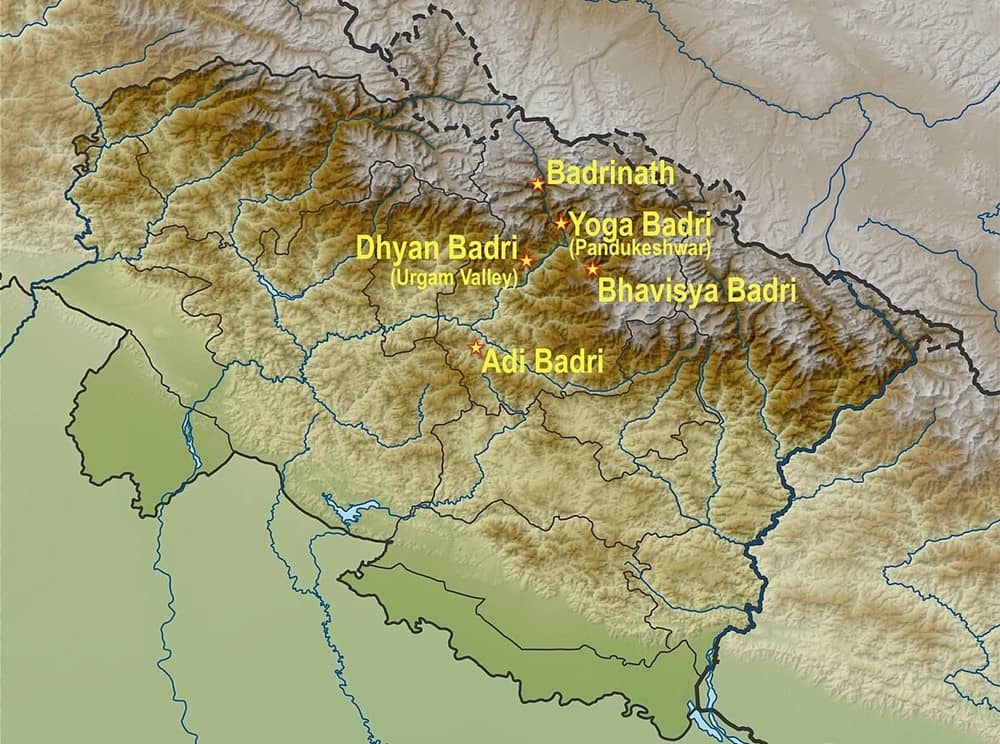
Five Holiest Temples in Uttarakhand
1. Badrinath:
Vishal Badri, also known as Badrinath, is most famous among Panch Badri Temples in the Chamoli district of Uttarakhand at an altitude of 3,133 meters. Nestled between the Nar and Narayan mountains, it is considered the abode of Lord Vishnu.
The temple, said to be built in the 8th century by Adi Shankaracharya, has been developed and renovated by various kings and dynasties, including the Holkars and Scindias. Badrinath is one of the four Char Dhams, important pilgrimage sites in the state.
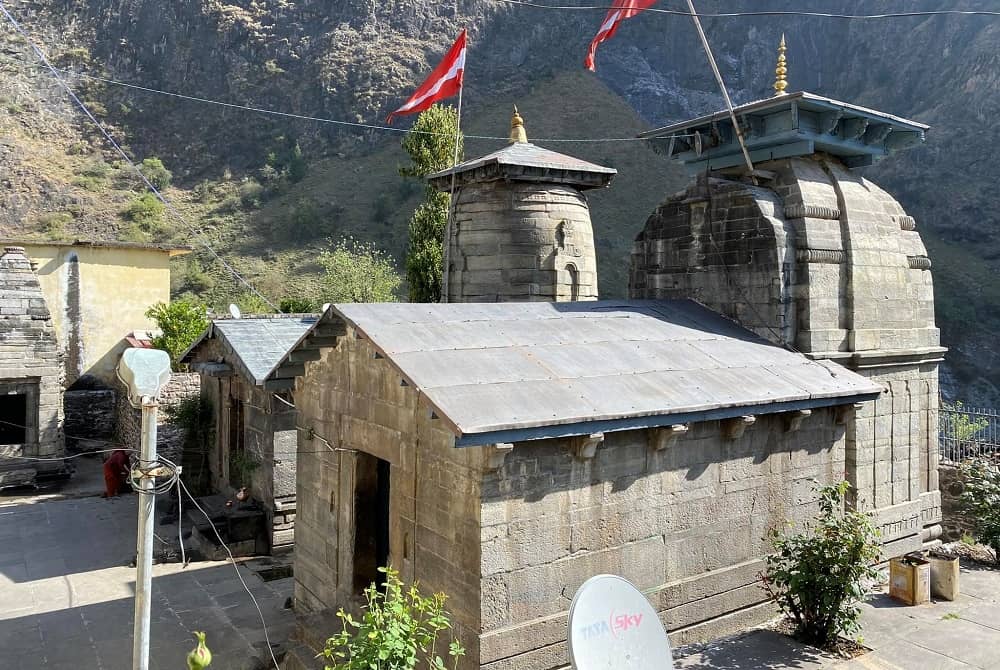
2. Yogadhyan Badri:
Yogdhyan Badri, located in Pandukeshwar village about 24 km from Joshimath, is a sacred site where Lord Vishnu is worshipped in a meditative pose. This ancient temple is considered as old as the Badrinath temple. According to legend, the Pandava brothers of the Mahabharata retired here after handing over their kingdom to Raja Parikshit.
King Pandu, their father, also spent his last days in penance here, which gives the village its name. Copper plates with inscriptions found here offer valuable historical insights about the temple and the early Katyuri kings.

3. Bhavishya Badri:
Located a short distance from Joshimath, this place is believed to be the future Badrinath. According to legend, when evil spreads across the world, the Nar and Narayan mountains will block access to Badrinath. Here, Lord Vishnu is worshipped as Narasimha.
The temple is not connected by roads and can only be reached on foot. It remains closed during winter and opens along with the Badrinath temple.

4. Vridha Badri:

5. Adi Badri:
Adi Badri is one of the first of the Panch Badri temples and is where devotees of Lord Vishnu pray when Badrinath is inaccessible during winters.
Established by sage Adi Shankaracharya, the complex consists of around seven temples built by the Gupta rulers between the 5th and 8th centuries AD. The main temple’s idol, made of black stone, holds a mace, a lotus, and a chakra.
Panch Badri Itinerary
Day 1: Delhi to Haridwar
- Depart from Delhi to Haridwar (205 km, 7 hours).
- Arrive in Haridwar, take a holy dip in the Ganges at “Har-ki-Pauri”.
- Visit Manasa Devi Temple by ropeway.
- Attend the evening Ganga Aarti.
Day 2: Haridwar to Pipalkoti via Rishikesh, Devprayag, and Rudraprayag
- After breakfast, travel to Rishikesh (24 km).
- Visit Shivananda Ashram, Ram Jhula, Swarg Ashram, Geeta Ashram, and Lakshman Jhula.
- After lunch, drive to Pipalkoti (240 km, 10 hours) with stops at Devprayag and Rudraprayag.
- Check into the hotel at Pipalkoti.
Day 3: Pipalkoti to Badrinath
- In the morning, travel to Badrinath (79 km, 4 hours).
- Have darshan of Shri Badrinath Ji.
- Visit Mana Village, the last village before the Indo-Tibetan border.
Day 4: Badrinath to Joshimath via Brahmakapal, Yogadhyan Badri, and Vishnuprayag
- Perform rituals at Brahma Kapal near the temple.
- Proceed to Joshimath, visiting Yogadhyan Badri and Vishnuprayag on the way.
- Check into the hotel at Joshimath.
Day 5: Joshimath to Pipalkoti via Bhavishya Badri and Vridha Badri
- Drive to Bhavishya Badri in the morning.
- Visit Vridha Badri.
- Continue to Pipalkoti for an overnight stay.
Day 6: Pipalkoti to Haridwar via Karnaprayag and Adi Badri
- Early morning departure to Haridwar.
- Pass through Nandprayag and Karnaprayag, visit Adi Badri.
- Arrive in Haridwar late in the evening and check into the hotel.
Day 7: Haridwar to Delhi
- After breakfast, drive back to Delhi (205 km, 7 hours).
- Arrive in Delhi in the evening and proceed with your onward journey.
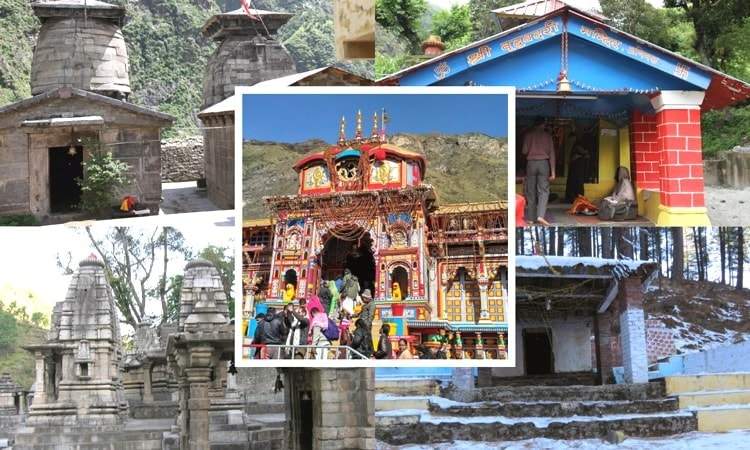
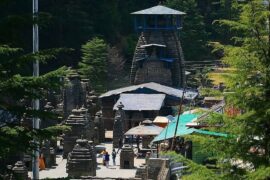


Comments are closed.